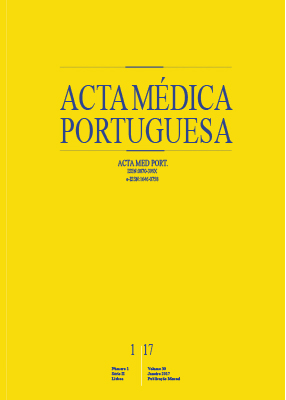Differences in the Students’ Perceptions on the Teaching of Neuroanatomy in a Medical Curriculum Organized by Disciplines and an Integrated Medical Curriculum
DOI:
https://doi.org/10.20344/amp.7307Keywords:
Curriculum, Educational Measurement, Education, Medical, Undergraduate, Neuroanatomy/education, Students, PortugalAbstract
Introduction: On the subject of curriculum reform, most European medical schools are moving away from an educational approach consisting of discipline-based courses to an integrated curriculum. The aim of this study was to compare, in the Faculty of Medicine of the University of Porto, Portugal, the teaching of neuroanatomy in a medical curriculum organized by disciplines and in an integrated medical curriculum.
Material and Methods: Two hundred sixty one students who completed the Curricular Unit with a discipline-based approach (Neuroanatomy) and 202 students who completed it with an integrated approach (Morphophysiology of the Nervous System) were asked to complete a questionnaire on their perceptions about the Curricular Unit.
Results: Our study showed that students of the Curricular Unit with a discipline-based approach had higher grades and evaluated it higher than students who followed the integrated approach. However, it also showed that students’ grades had a significant effect on the evaluation of the curricular unit, with students with higher grades evaluating higher than students with lower grades. Besides, the majority of the students of the Curricular Unit with an integrated approach appreciated this curriculum model and highlighted as a positive point the successful integration of contents covered in the three components of the curricular unit.
Discussion: The curriculum reform led to the integration of neuroanatomy with other disciplines and resulted in a reduction of the teaching hours, a redefinition of the syllabus contents and the students’ learning objectives, the introduction of new educational methods and changes in the evaluation system.
Conclusion: Our study could not prove conclusively the supremacy of one pedagogic approach to neuroanatomy over the other. Future initiatives to explore different pedagogical models in medical education are needed and should be of major concern to the medical faculty.
Downloads
Downloads
Published
How to Cite
Issue
Section
License
All the articles published in the AMP are open access and comply with the requirements of funding agencies or academic institutions. The AMP is governed by the terms of the Creative Commons ‘Attribution – Non-Commercial Use - (CC-BY-NC)’ license, regarding the use by third parties.
It is the author’s responsibility to obtain approval for the reproduction of figures, tables, etc. from other publications.
Upon acceptance of an article for publication, the authors will be asked to complete the ICMJE “Copyright Liability and Copyright Sharing Statement “(http://www.actamedicaportuguesa.com/info/AMP-NormasPublicacao.pdf) and the “Declaration of Potential Conflicts of Interest” (http:// www.icmje.org/conflicts-of-interest). An e-mail will be sent to the corresponding author to acknowledge receipt of the manuscript.
After publication, the authors are authorised to make their articles available in repositories of their institutions of origin, as long as they always mention where they were published and according to the Creative Commons license.









